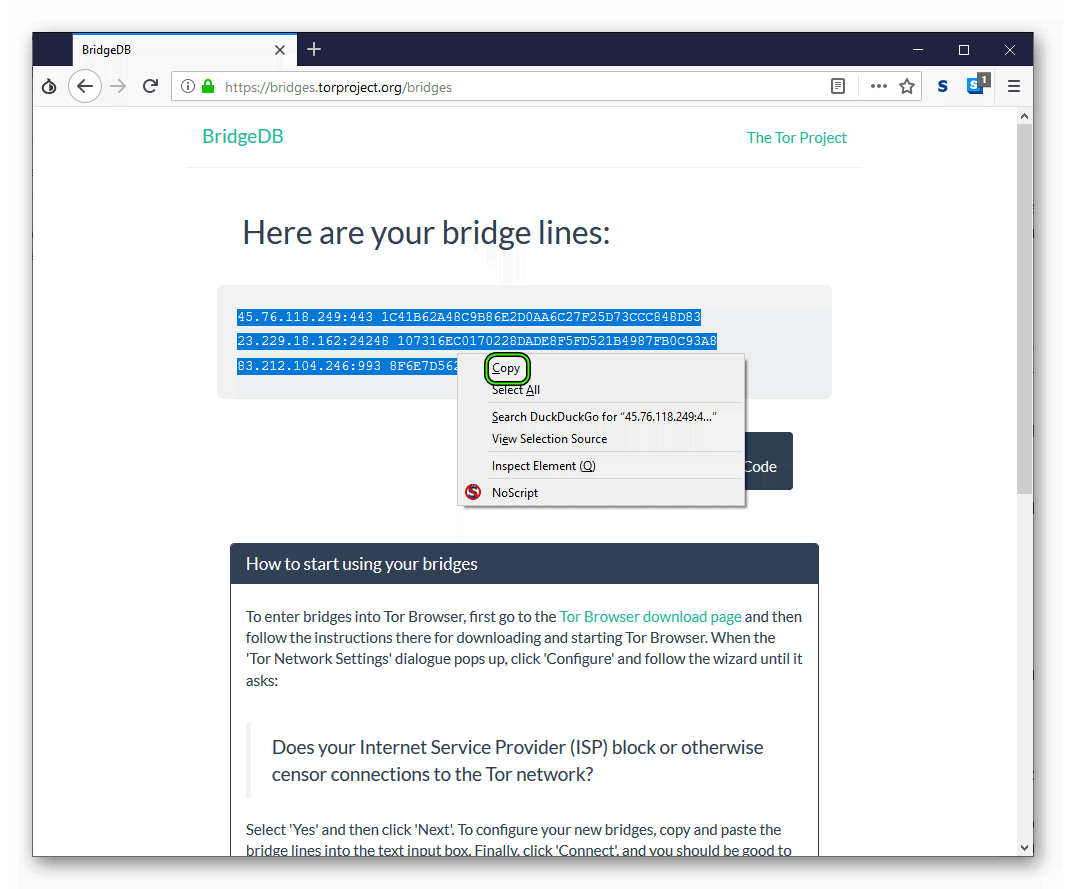
Menu entry 2: Toggle Bridge Relay Mode: You either can switch the bridge relay mode on or off. It is a summary of what has been written above. Menu entry 1: Run a Tor Bridge Relay – Read Me First: This brief introduction is intended to help new users, in particular, to understand and to simplify the set up of a bridge relay within TorBox. In the following, we look at all menu entries one by one: However, all the configurations are saved so that it is easy to restart the bridge relay mode again (menu entry 2 and then menu entry 7). 
Important: Changing the connection settings in the main menu, activating OBFS4, Meek-Azure and Snowflake bridges, or resetting Tor deactivates the bridge relay mode automatically. To confirm your bridge relay is running, you should see something like this in the log (menu entry 7): Toggle the OBFS4 BRIDGE RELAY MODE from OFF to ON (menu entry 2).Check and/or change the configuration (menu entry 3).The activation of a bridge relay is a three-step process: With the help of the OBFS4 Bridge Relay sub-menu, you can easily set up your OBFS4 Bridge Relay if you meet the abovementioned requirements.
 The ability to expose TCP ports to the internet (public IP, port forwarding make sure that NAT doesn’t get in the way). 24/7 internet connectivity for a longer time (weeks or months). It has to offer at least a 1 Mbit/s down-/upload bandwidth ( Speedtest). The Tor network needs a constant trickle of new bridge relays that aren’t blocked anywhere yet - and you can help with that! Setting up a bridge relay can help censored users connect to the open Internet through Tor.įor setting up a bridge relay, your internet connection has to meet some minimal requirements: Unfortunately, the number of bridge relays has been stagnant for a while (currently, there are about 2’500 OBFS4 bridge relays). Not only are bridges private, but they can also modify their network packets in a way that it’s difficult for an observer to conclude that somebody is using Tor - that’s when OBFS4 comes into play. However, thanks to bridges, Tor users can still connect to the network when the public Tor relays are blocked.
The ability to expose TCP ports to the internet (public IP, port forwarding make sure that NAT doesn’t get in the way). 24/7 internet connectivity for a longer time (weeks or months). It has to offer at least a 1 Mbit/s down-/upload bandwidth ( Speedtest). The Tor network needs a constant trickle of new bridge relays that aren’t blocked anywhere yet - and you can help with that! Setting up a bridge relay can help censored users connect to the open Internet through Tor.įor setting up a bridge relay, your internet connection has to meet some minimal requirements: Unfortunately, the number of bridge relays has been stagnant for a while (currently, there are about 2’500 OBFS4 bridge relays). Not only are bridges private, but they can also modify their network packets in a way that it’s difficult for an observer to conclude that somebody is using Tor - that’s when OBFS4 comes into play. However, thanks to bridges, Tor users can still connect to the network when the public Tor relays are blocked. 
One way to prevent people from using Tor is to block the public IP addresses of all thousands of Tor relays. In general, relays that make up the Tor network are publicly listed. A bridge isn’t likely to receive any abuse complaints, and since bridges are not listed as public relays, they are unlikely to be blocked by popular services. OBFS4 Bridge Relay are relatively easy, low-risk and low bandwidth Tor nodes to operate, but they significantly impact users. The OBFS4 Bridge Relay sub-menu of TorBox v.0.5.0 Short Explanation and requirementsĪlmost everyone can help others in censored countries connect to the open Internet.







 0 kommentar(er)
0 kommentar(er)
